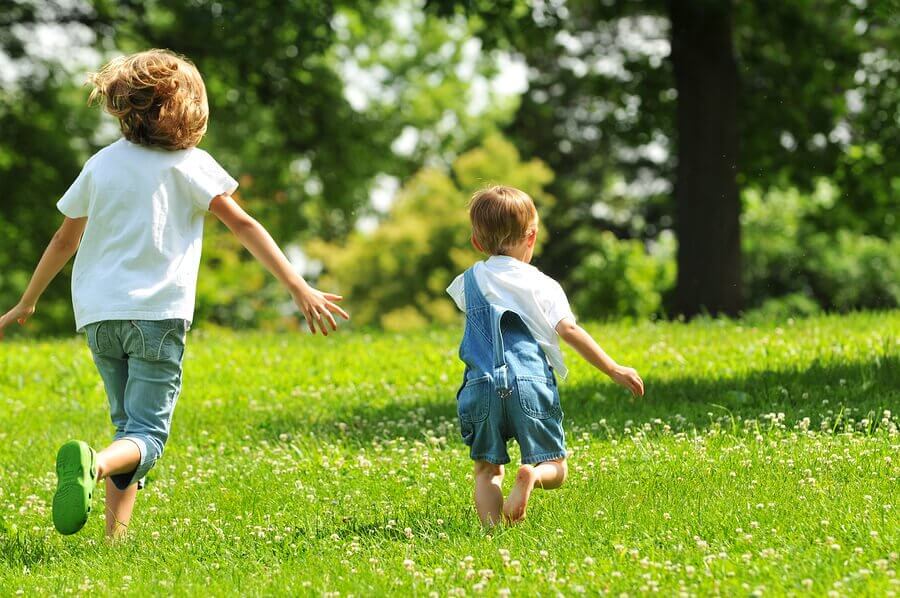Birth to 5 months
If you wish to give the means to the child for his development you must give them in such a way that the child can, and must move. ...In all her books, lectures, conversations, Montessori incessantly returns to this great theme of the importance of movement.
—E.M. Standing Maria Montessori, Her Life and Work
Children need to move – while this statement seems simple and straightforward, it is also one that is often overlooked or taken for granted. Although science talks about the benefits of movement for children, it is still regarded as something separate that children need to do only for specific hours in their day. Dr. Maria Montessori observed that the intellect is built through movement and the two cannot be regarded separately.

Babies are moving from the moment of birth – in fact they are also moving in-utero. When babies are born, they are going through an immense change in environment from inside the womb to the outside world. Their first task as a newborn is to figure out this strange new place they are in and to orientate themselves to it. They are eager to get to know this world and it is only through movement that they begin to understand their body and its relationship with the world that they are born into.
Using their senses and movement of their muscles, babies build their brain. As adults it is our role to observe the needs of this child and create an environment to meet their needs and aid their development. The development aids (what we call toys) we offer babies in the first 6 months of life must appeal to their visual, tactile and auditory senses. We must be careful that these aids stimulate but do not overwhelm the child. We must also offer them experiences with nature, so they begin to understand and appreciate the natural beauty of this world.
Visual Sense
The first position that the baby is, on their back. During this time their visual sense in still developing and we offer appropriate mobiles for them to track. When they are newborn, babies aren't able to track objects with their eyes. They are learning to focus on objects with their eyes and this takes practice. Visual mobiles are designed to help babies with their eye-tracking movements.
- Unlike the mobiles typically seen hung above cribs which are too fast, too loud and too colourful – which end up overstimulating and even scaring the baby, Montessori provide just enough stimulation by using subtle colours. They are light weight, so they have a more natural movement when a slight breeze hits them
- Apart from looking aesthetically appealing, mobiles help you baby to develop concentration, visual tracking and depth perception
- The mobile is hung for the baby to view when the baby is lying on their back. It is hung above the baby’s chest – about 12 inches or 30cm away as that is the how far babies can see in the initial days
- Iinfants need uninterrupted time to look at the mobiles. It might not happen immediately, so exercise patience and try to resist interfering.
Tactile Sense
The tactile sense is the first sense that develops in utero and heightens after birth.
At birth the baby can easily be overwhelmed by the way they are touched, the clothes we put on them and the pressure we put on their body. We must be very aware of this tactile sense and how we can offer support in these first six months.
We know that babies can be on their back or on their tummy and prone, and we must think about the tactile experiences we offer them at each of these positions. The environment (like flooring, mat, grass, sand) also offer a rich experience for their tactile sense.

Between 3-5 months is when they baby’s grasping reflex develops. They begin to move from involuntarily grasping things to voluntarily reaching for things to grasp and touch.
At this point, we can offer the grasping aids like interlocking disc, interlocking rings and the grasping beads.
When the baby is lying on their back – hold it slightly out of reach of the child so they are motivated to reach out and grasp it. Once they have grasped it, leave them to explore it.
When the baby is lying on their stomach (during tummy time) – place it on the floor or mat slightly out of reach so babies are motivated to move forward to grasp it.
Around 5-6 months when babies start teething so we can offer many opportunities for something they can get satisfaction from by sucking on them. Wooden teethers offer babies opportunities to for develop their eye-hand coordination while meeting their need to teeth in a safe manner.
Auditory Sense
Baby in utero can hear the mother’s heartbeat, breathing and digestive sounds.
Later they hear the mother and father’s voice. From the moment they are born these voices they hear become their point of reference. They gain comfort from the mother’s or father’s voice at birth and this helps them establish trust in the world and feel safe and secure.
We must offer musical experiences, sing to the baby, play pieces of music in order to stimulate the auditory system. We can offer rattles that make a pleasant sounds and not overwhelm or scare the child.

Rattles are suitable developmental aids for holding, grasping, manipulating and shaking. We can offer various experiences and offer a choice to the child between different kinds of rattles like the wooden tumbler rattle, wooden bell rattle, wooden circular rattle and wooden rolling rattle.
“It is high time that movement came to be regarded from a new point of view in educational theory. “Especially in childhood we misunderstand its nature, and a number of mistaken ideas make us think of it as something less noble than it actually is. “Montessori, M., (2011). The Absorbent Mind: p. 213.






